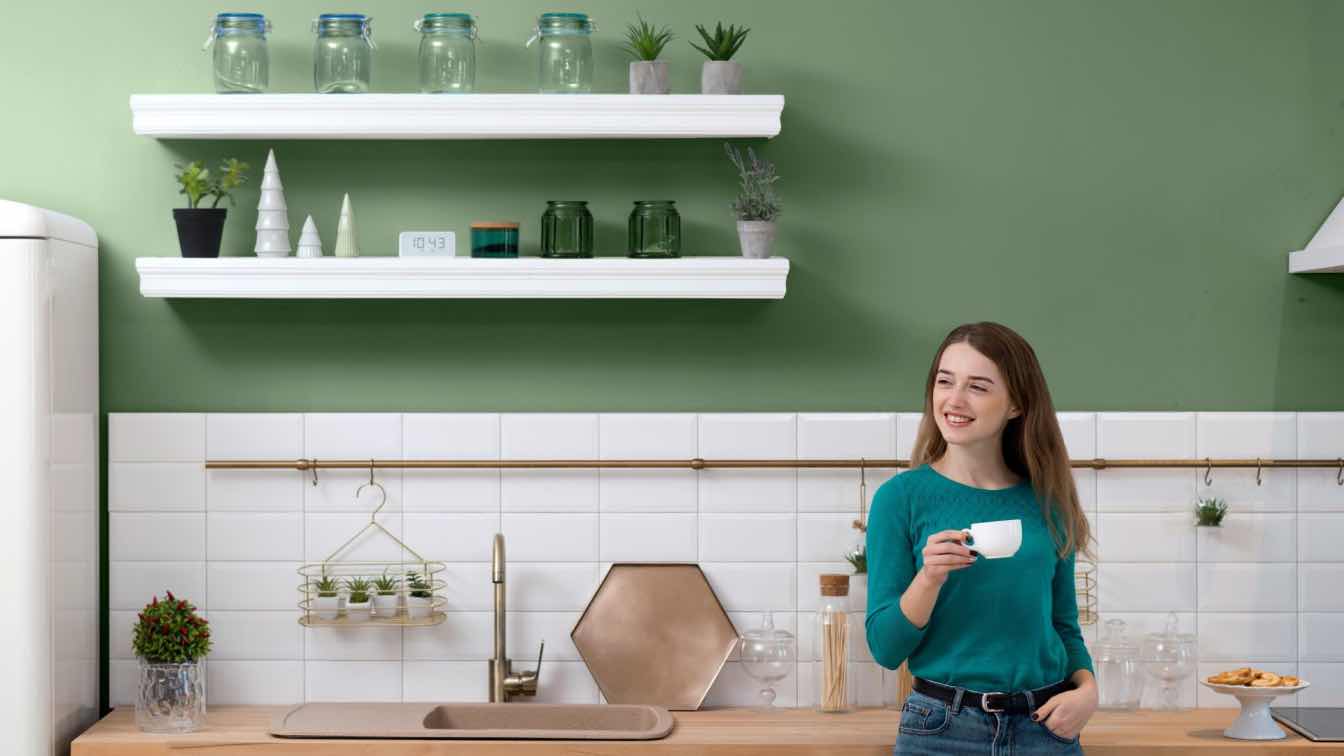Introduction
A kitchen renovation is a perfect opportunity to make your home more sustainable. According to a 2023 survey by Houzz, 92% of homeowners incorporate sustainable features into their kitchen remodels, emphasizing energy efficiency, water conservation, and eco-conscious materials. Whether you're upgrading appliances or choosing sustainable materials, a green kitchen benefits both the environment and your home’s resale value. If you're considering selling your home in the future, an eco-friendly renovation can make it more attractive to buyers and help with strategies such as how to sell a house by owner. Here’s how you can achieve a sustainable kitchen renovation while reducing waste and conserving energy.
1. Upgrade to Energy-Efficient Appliances
Switching to energy-efficient appliances is one of the most effective ways to reduce your kitchen’s carbon footprint. 61% of homeowners opt for energy-efficient appliances in their remodels. When selecting appliances:
- Look for models with high energy ratings (A+ or higher).
- Invest in induction cooktops, which use less energy than gas stoves.
- Choose smart refrigerators and dishwashers that optimize energy and water usage.
- Consider air fryers and convection ovens, which cook food faster and use less electricity.
By upgrading your appliances, you will lower your utility bills and add long-term value to your home, making it more appealing to eco-conscious buyers.
2. Choose Sustainable Materials and Cabinetry
The materials you use in your kitchen significantly impact its sustainability. When selecting cabinetry, opt for FSC or PEFC-certified wood, which ensures responsible forestry practices. Avoid mass-produced, low-quality cabinets that wear out quickly and contribute to landfill waste. Additionally:
Reclaimed wood adds character and reduces demand for new lumber.
Recycled or eco-friendly countertops made from glass, composite, or bamboo are durable and sustainable alternatives to traditional granite.
Low-VOC (volatile organic compounds) paints and finishes ensure better indoor air quality and minimize toxins in your home.
Investing in high-quality, long-lasting cabinetry reduces waste and ensures your kitchen remains stylish and functional for years.
3. Reduce Plastic Waste in the Kitchen
Single-use plastics are a primary environmental concern, but you can reduce their impact with simple changes (Sustainable Kitchens):
- Use reusable glass jars instead of plastic food storage bags.
- Replace plastic wrap with beeswax wraps, which are breathable and reusable.
- Swap plastic dish brushes and sponges for biodegradable alternatives made from natural fibers.
- Choose bamboo cutlery and paper plates when hosting events instead of plastic utensils.
- Use biodegradable trash bags and grocery totes to minimize waste.
Reducing plastic waste is a small but powerful step toward creating a greener kitchen that is in accordance with sustainable living principles.
4. Incorporate Water-Efficient Fixtures
Water conservation is a key component of an eco-friendly kitchen. According to Forbes, 34% of homeowners choose water-efficient fixtures in their remodels. To reduce water waste:
- Install a low-flow faucet, which reduces water usage without sacrificing performance.
- Choose an energy-efficient dishwasher that uses less water per cycle.
- Use a water filter system to eliminate the need for bottled water, reducing plastic waste.
- Collect and reuse rainwater to water indoor plants and gardens.
By incorporating water-saving fixtures, you create a more sustainable kitchen that conserves resources while lowering utility costs.
5. Shop Local and Use Eco-Friendly Cleaning Products
A sustainable kitchen extends beyond its design—your cooking and cleaning habits also play a role. Sustainable Kitchens highlights the benefits of buying locally and using eco-friendly products:
- Support local farmers by shopping at farmers' markets to reduce food miles and packaging waste.
- Choose organic produce to minimize pesticide and fertilizer use.
- Use eco-friendly cleaning products in glass or recyclable containers instead of plastic bottles.
- Opt for plant-based or biodegradable sponges and brushes to reduce microplastic pollution.
Making these small but impactful changes helps create a functional and environmentally responsible kitchen. These efforts also contribute to a healthier home, which can be a significant selling point for future buyers considering whether to buy before you sell.
Conclusion
Renovating your kitchen with sustainability in mind is not only beneficial for the environment but also adds long-term value to your home. You create a greener, healthier space by upgrading to energy-efficient appliances, using sustainable materials, reducing plastic waste, incorporating water-efficient fixtures, and shopping locally. As more homeowners look for eco-friendly features, these upgrades can also make your home more marketable—whether you plan to sell your house by owner or buy before you sell. Investing in a sustainable kitchen today means a brighter, greener future for both your home and the planet.





